Koh Samui Island
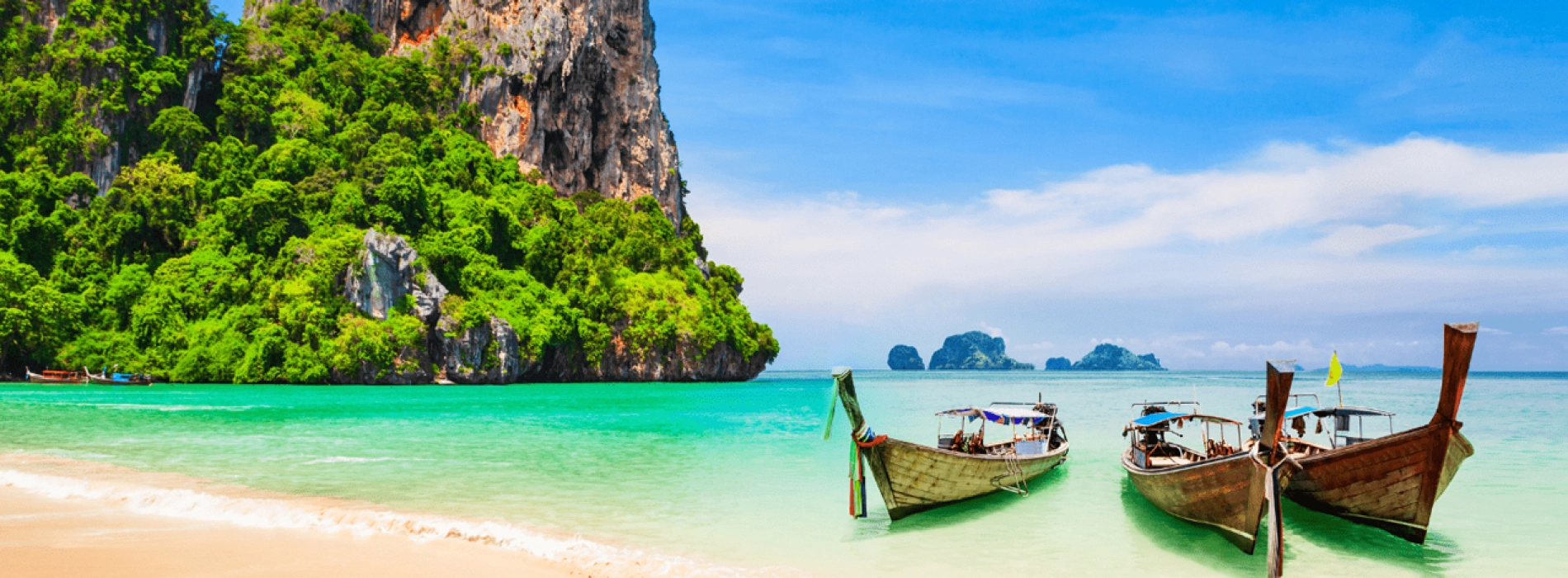
Located in the Gulf of Thailand, Koh Samui is a tropical island that captivates visitors with its many attractions and stunning environment. by beaches surrounded by palm trees, pristine waterways, and verdant rainforests, the island provides a lovely haven. Well-known beaches like Chaweng and Lamai provide a variety of experiences, from calm getaways to exciting nightlife. The Big Buddha Temple and the fascinating Hin Ta and Hin Yai Rocks are notable sights. Nature lovers may visit the picturesque Na Muang Waterfall, while adventurers can partake in water sports and explore neighboring islands. The nightlife of Koh Samui is lively, especially in Chaweng, where there are clubs and beach bars. The island offers a wide range of culinary experiences, from high-end restaurants to street cuisine.
The history of Koh Samui is braided together by the impacts of traders, early settlers, and agricultural endeavors. The island, which was inhabited by fisherman at first and saw the arrival of Chinese and Malay seafarers, became important economically in the 19th century when coconuts were grown there, positioning it as a center of commerce. The island was affected by Japanese occupation during World War II, but its coconut industry recovered after the war. A tourism boom resulted from travelers discovering Koh Samui's immaculate beaches in the late 20th century, which was a turning point. When an airport was built in 1989, accessibility was improved and the island became a popular travel destination.
Koh Samui is a modern island that strives to maintain its cultural legacy despite development. This is demonstrated by the temples and traditional markets, which offer a tasteful fusion of the past, adaptability, and modern appeal.
Numerous picturesque locations on Koh Samui enthrall tourists with their combination of scenic beauty and cultural relevance. Here are some of the island's most picturesque locations, which range from immaculate beaches to verdant waterfalls:
Chaweng Beach: Koh Samui's most famous beach, Chaweng Beach, boasts powdery white sand and turquoise waters. It is not only a hub for water sports and activities but also a stunning spot to relax and enjoy the sunset.
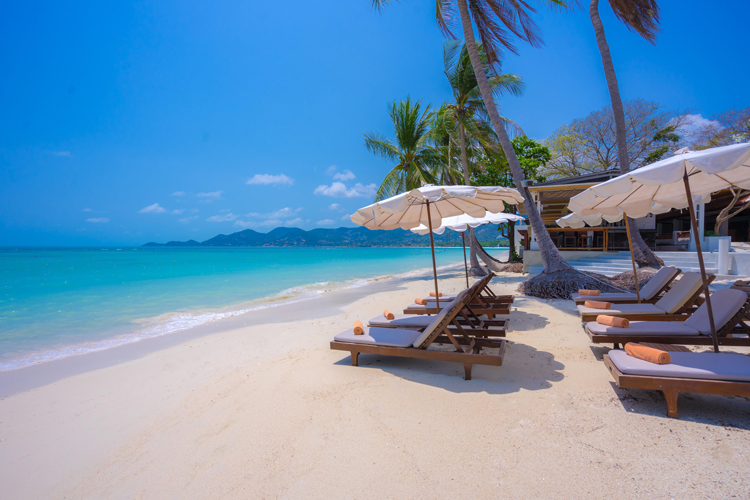
Chaweng Beach - dynamic blend of natural beauty, water activities and nightlife
Lamai Beach: Lamai Beach offers a more laid-back atmosphere compared to Chaweng. The beach is known for its beautiful palm-fringed shoreline and the iconic Grandfather and Grandmother Rocks.

The beach features golden sand and clear blue waters
Big Buddha (Wat Phra Yai): The Big Buddha Temple is a prominent landmark featuring a 12-meter tall golden Buddha statue. The site offers panoramic views of the surrounding landscapes and the sea.
.jpg)
Wat Phra Yai - One of the most iconic and revered landmarks on Koh Samui
Hin Ta and Hin Yai Rocks: Also known as the Grandfather and Grandmother Rocks, these natural rock formations on Lamai Beach are shaped like male and female genitalia, creating a unique and amusing sight.
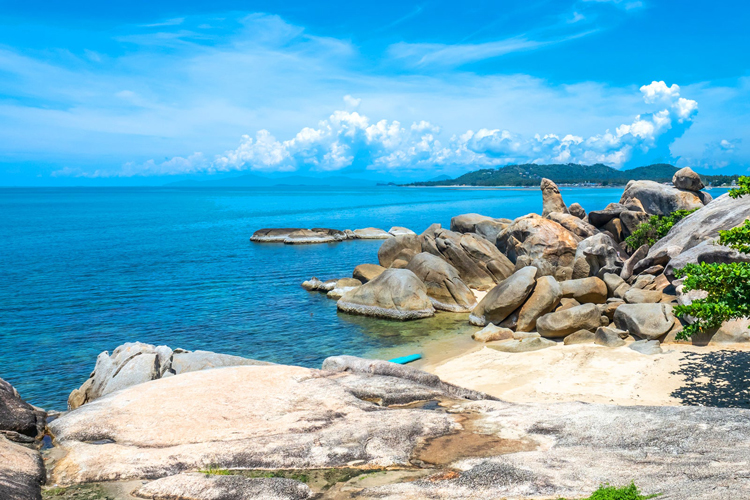
Hin Ta and Hin Yai Rocks - a blend of natural beauty, cultural significance
Na Muang Waterfall: Surrounded by lush tropical jungle, Na Muang Waterfall is a picturesque cascade with a natural pool at its base. It's an ideal spot for a refreshing dip or simply enjoying the natural beauty.

Na Muang Waterfall - A serene and natural retreat
Koh Samui experiences a tropical climate, characterized by warm temperatures and distinct wet and dry seasons.
Dry Season (December to February): This is considered the high season for tourism in Koh Samui, the weather is generally warm and dry with temperatures ranging from 24°C to 32°C. Clear skies and lower humidity make it an ideal time for beach activities and outdoor exploration. Sea conditions are calm and suitable for water sports.
Hot Season (March to August): This period is characterized by higher temperatures and occasional short rain showers, daytime temperatures can reach up to 35°C. The humidity starts to increase, especially in the later months, making it feel hotter. April tends to be the hottest month, and occasional rain showers help cool things down.
Wet Season (September to November): This is the monsoon season in Koh Samui, with higher chances of rainfall, September and October are typically the wettest months. Rain showers can be heavy, but they are often short-lived, and the sun can still make appearances.
Humidity: Koh Samui is generally humid throughout the year, but humidity levels tend to be higher during the wet season.
Typhoon and Storm Risk: Koh Samui is not directly in the path of typhoons or tropical storms that affect other parts of Southeast Asia. However, the island can experience indirect effects such as increased rainfall during the monsoon season.
Many travelers who have been to Koh Samui have said that December to early March is the ideal time to visit the island. You should visit Koh Samui between March and September, especially if you want to go swimming. You should avoid visiting Koh Samui during the months of October and November in particular since the weather during these months is frequently wet and unsuitable for swimming.
To explore the beaches and attractions in the Koh Samui area, you should spend about 3 to 4 days. Of which 2 days are for fun island activities, 1 day is for visiting temples and 1 day is for visiting Angthong National Marine Park - Thailand's most famous national marine conservation park.
Angthong Marine Park

Ang Thong Marine Park - A pristine and stunning natural paradise
One of the biggest national parks and natural reserves in Thailand is Angthong National Marine Park. When you visit this park, you will be able to take in the breathtaking view of over 40 islands scattered over the ocean. Towering limestone cliffs, undulating forests, and mountainous terrain run parallel to that. Additionally, you may hike and go to the observation decks to take in the breathtaking views of the park from above.
Fisherman's Village (Bophut)
.jpg)
A must-visit for those exploring Koh Samui
The serene fishing village of Bo Phut is situated in the north of the island. The distinctive architectural style of Bophut fishing village will astound you upon your arrival because the fishing village's dwellings are virtually entirely constructed of wood. Fishing Village, one of the oldest communities on the island, is impacted by a variety of elements, including French colonization and traditional Thai and Chinese culture.
Secret Buddha Garden (Tarnim Magic Garden)
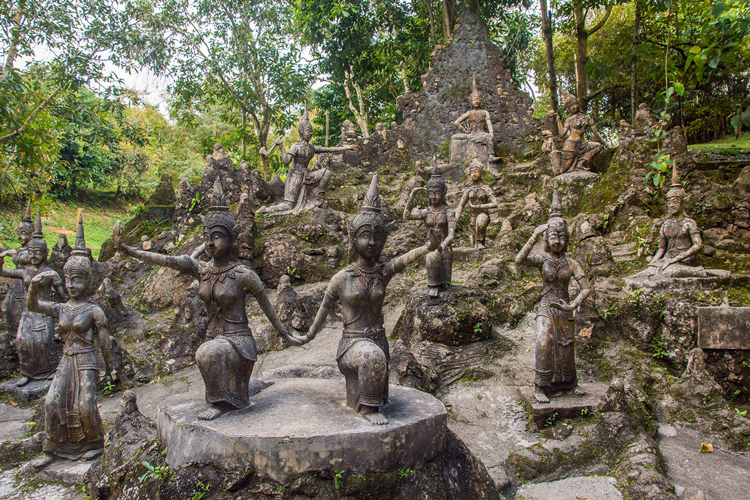
A place where visitors can connect with nature and artistry
Other names for the Mysterious Buddha Garden include the Magic Garden and the Garden of Heaven. Though it might be difficult to get to, the garden is well worth the effort because it is situated high in the hills of Samui's rainforest. Numerous sculptures of Buddha and other characters from Buddhist mythology may be found around the garden. The statues in this area show humans, animals, and gods in various poses, including Khun Nim lounging on a rock.
Laem Sor Pagoda
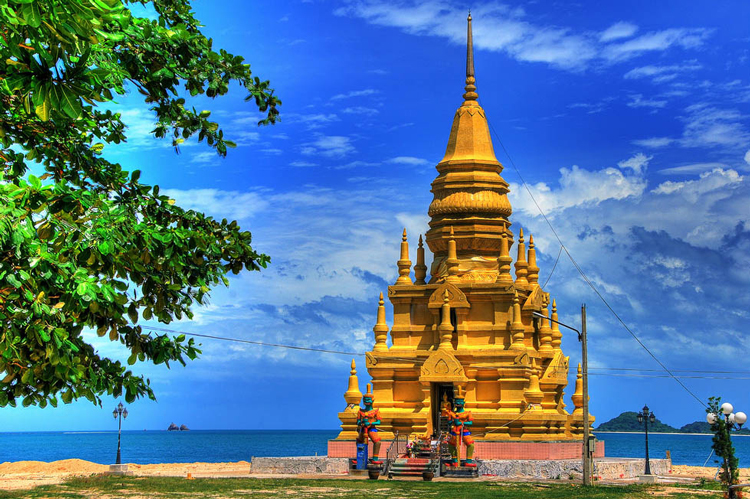
Laem Sor Pagoda - The golden pagoda against the backdrop of the sea
The Laem Sor Pagoda is a spectacular landmark that sits atop the rocky beach of Laem Sor, southern Koh Samui. With a striking golden color and a blend of Thai and Chinese architectural traditions, this Buddhist temple is beautifully situated against the Gulf of Thailand. The pagoda, which has religious importance and houses a Buddha statue, draws those looking for quiet times for prayer and meditation.
Hua Thanon Beach
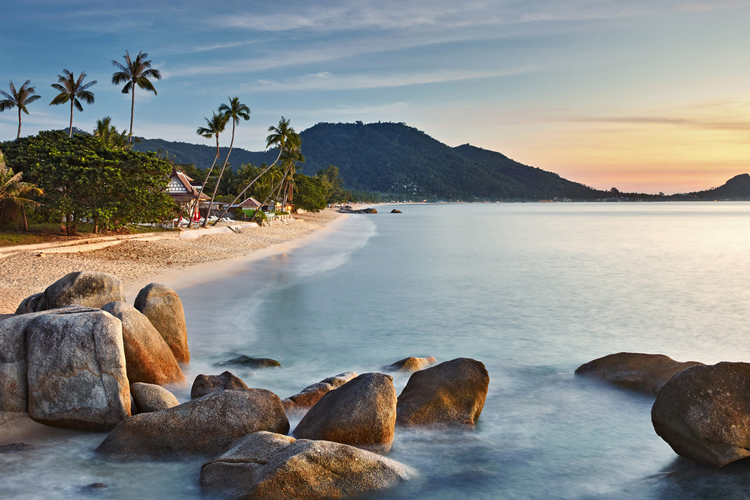
Hua Thanon Beach - A hidden gem for travelling
Hua Thanon Beach is a quiet and less busy coastal treasure that provides travelers with a peaceful getaway from the busier parts of the island. It is situated on Koh Samui, Thailand's southern coast. The beach is a delightful expanse of golden sand with gently swaying palm palms. Its laid-back attractiveness is a reflection of the leisurely pace of life in this area of Koh Samui.
Koh Samui's diversity ensures that there are activities for every taste, whether you're seeking relaxation, adventure, or cultural exploration.
Cultural Activities: Visit local temples such as Wat Plai Laem and Wat Khunaram, known for its mummified monk. Participate in traditional ceremonies or festivals if your visit coincides with one.
Water Sports: Engage in water activities such as kayaking, paddleboarding, jet-skiing, and parasailing available at various beaches.
Cooking Classes: Learn to prepare authentic Thai dishes by joining a cooking class. Many establishments offer hands-on experiences where you can create your own delicious Thai meals.
Spa and Wellness: Indulge in spa treatments and wellness activities offered by the island's resorts and wellness centers.
Explore the Jungle: Take an ATV or jeep tour to explore the island's interior, visit viewpoints, and experience the lush jungle landscapes.
Sunset Cruise: Enjoy a romantic sunset cruise around the island, complete with stunning views, dinner, and sometimes live entertainment.
Staying here won't cost you too much money. When visiting Koh Samui, travelers most frequently stay in Chaweng Beach (largest beach, best infrastructure), as well as a few smaller beaches like Big Buddha, Maenam, Lamai, and Bophut fishing hamlet. The most costly of these are the 3-star resorts in the Chaweng region, which cost around 4,000 baht per night. The remaining establishments typically have quite reasonable rates, with ordinary rooms costing between 700 and 1000 baht per night and inexpensive rooms costing between 300 and 400 baht.
Koh Samui offers a diverse and delicious array of Thai and international cuisine from street food stalls to upscale restaurants. Exploring the local markets, beachside eateries, and trying street food are great ways to fully immerse yourself in the culinary delights of Koh Samui. Don't be afraid to experiment with new flavors and enjoy the diverse tastes that the island has to offer.
Hoy Tod (Oyster Omelette): A savory omelette made with fresh oysters, eggs, and a crispy outer layer. Served with a tangy dipping sauce.
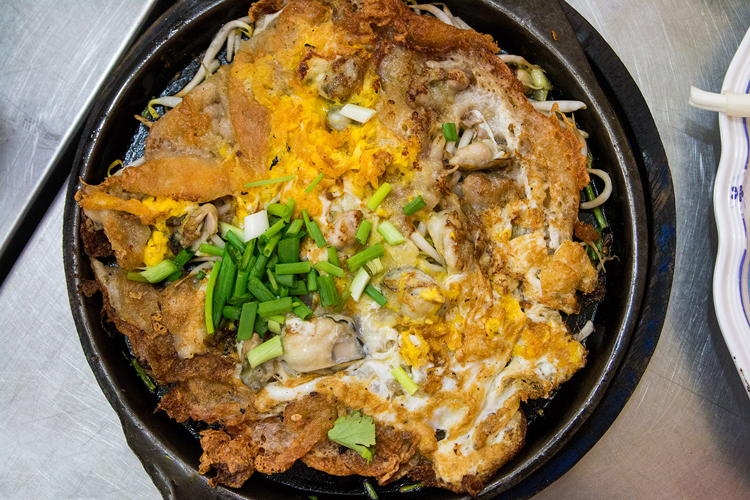
A unique and extremely delicious dish in Koh Samui
Kanom Jeen Nam Ya (Rice Noodles with Fish Curry): A traditional Southern Thai dish featuring rice noodles topped with a flavorful fish curry sauce and an array of fresh herbs and vegetables.

Kanom Jeen Nam Ya - The complexity and balance of flavors in Thai cuisine.
Here are two suggested brief programs for spending a few days in Koh Samui, highlighting a mix of cultural exploration, relaxation, and outdoor activities
Program 1: "Island Bliss"
Day 1: Arrival and Beach Relaxation
Day 2: Cultural and Scenic Exploration
Day 3: Adventure and Water Activities
Program 2: "Nature and Serenity"
Day 1: Arrival and Coastal Exploration
Day 2: Jungle Adventure and Waterfall
Day 3: Cultural Immersion and Sunset Views
Big Buddha Temple (Wat Phra Yai): Free
Angthong Marine Park Tour: Prices vary based on the type of tour and the operator. Day trips with snorkeling and kayaking activities can range from 1,500 to 2,500 Thai Baht per person.
Na Muang Waterfall: Free
Secret Buddha Garden (Tarnim Magic Garden): Free entrance
Fisherman's Village (Bophut): Free
Laem Sor Pagoda: Free
Hin Ta and Hin Yai Rocks: Free
Tiger Zoo Samui, Elephant Sanctuary Samui, Coco Splash Adventure & Water Park,etc: Prices vary and change constantly, so visitors need to come in person to know the prices
Street Food and Local Eateries: Expect to pay around 40 to 150 Thai Baht for a meal.
Casual Restaurants: In mid-range restaurants and beachside cafes, prices can range from 150 to 500 Thai Baht per person, depending on the type of cuisine and the location.
Fine Dining: Fine dining establishments and upscale restaurants may have higher prices, with meals ranging from 800 to 2,500 Thai Baht or more per person.
Seafood Restaurants: Prices for seafood dishes in beachfront restaurants can range from 300 to 1,500 Thai Baht per person
Local Markets: Fresh fruits, snacks, and street food from local markets are generally very affordable, with prices ranging from 20 to 100 Thai Baht.
Beverages: Bottled water is relatively inexpensive, usually costing around 10 to 20 Thai Baht. Soft drinks may range from 20 to 50 Thai Baht. Local beers, like Chang or Singha, can be around 50 to 100 Thai Baht in restaurants and bars. Imported or craft beers may be more expensive, ranging from 100 to 300 Thai Baht.
Coffee: A cup of local Thai coffee can cost around 30 to 50 Thai Baht. Specialty or international coffee brands in cafes may range from 50 to 150 Thai Baht.
Cocktails: Cocktails at beach bars or upscale establishments can range from 150 to 400 Thai Baht.
Car and Motorbike Rentals: Renting a car or motorbike is a popular and convenient way to explore Koh Samui independently. Many rental agencies are available on the island, and it provides the flexibility to visit different attractions at your own pace.
If you’re arriving via Koh Samui Airport, it’s a great idea to rent a car right upon arrival. Use Cars-scanner to compare prices from all local rental companies in one place. This way, you can easily find the best offer and potentially save on transportation during your stay.
Taxis: Taxis are readily available on Koh Samui, and they can be hired for short trips or full-day excursions. It's advisable to negotiate the fare with the driver before starting the journey or use metered taxis where available.
Songthaews: Songthaews are open-air, shared minibuses or trucks that follow fixed routes around the island. They are a more economical option for getting around and can be flagged down or boarded at designated stops.
Renting a Bicycle: Some travelers opt for bicycles to explore the quieter areas of Koh Samui. This is a more eco-friendly option and suitable for those who enjoy cycling.
Rental Buggies: Some visitors choose to rent buggies, especially in more secluded areas. Buggies offer a fun and adventurous way to navigate the island.
Walking: In certain areas, especially around town centers and beaches, walking can be a pleasant way to explore. Many attractions are within walking distance of popular accommodations.
Flights: Koh Samui has its own airport, Samui International Airport (USM), with direct flights to and from Bangkok, Phuket, and other major airports in Thailand. From Samui, you can catch connecting flights to various destinations across the country.
Ferries and Boats: Ferries and boats connect Koh Samui to nearby islands and provinces. Some common routes include:
To Koh Phangan: Ferries operate regularly between Koh Samui and Koh Phangan, a neighboring island known for its Full Moon Party.
- To Surat Thani: Ferries connect Koh Samui to the mainland town of Donsak in Surat Thani province. From Donsak, you can continue your journey by bus or train to other parts of Thailand.
- To Koh Tao: Ferries also run between Koh Samui and Koh Tao, a popular diving destination.
Buses and Minivans: Buses and minivans provide land transportation to neighboring provinces. You can take a bus or minivan to Surat Thani and then connect to other destinations on the mainland or further inland.
Car Rentals: Renting a car is an option if you prefer driving. You can use the car ferry from Koh Samui to the mainland and then drive to your destination. Keep in mind that driving conditions may vary, and traffic rules may differ from those in your home country.
Domestic Flights from Surat Thani: If you take a ferry to Donsak in Surat Thani, you can consider flying from Surat Thani International Airport to other destinations in Thailand. Surat Thani is well-connected by air to major cities like Bangkok.
Combination of Transportation: Depending on your destination, you may need to use a combination of transportation modes. For example, taking a ferry to the mainland and then catching a bus or train to your final destination.